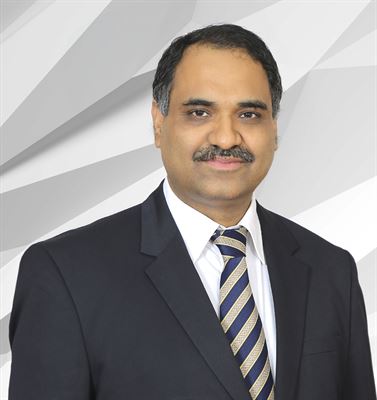 Started in 2018, Linxon represents a partnership between Hitachi Energy (previously ABB) and SNC-Lavalin. It is a unique case of an original equipment manufacturer joining forces with a project management and project execution specialist. In India, Linxon has built an impressive list of project references, within less than three years of starting operations, in the areas of power substations and metro rail electrification. In this exclusive interview, Dinesh Chadha, Managing Director, Linxon India & Deputy Chief Executive Officer Linxon, discusses his company’s genesis and activities. Dinesh Chadha explains how India’s massive renewable energy ambitions can be a business growth driver for Linxon in the subcontinent.
Started in 2018, Linxon represents a partnership between Hitachi Energy (previously ABB) and SNC-Lavalin. It is a unique case of an original equipment manufacturer joining forces with a project management and project execution specialist. In India, Linxon has built an impressive list of project references, within less than three years of starting operations, in the areas of power substations and metro rail electrification. In this exclusive interview, Dinesh Chadha, Managing Director, Linxon India & Deputy Chief Executive Officer Linxon, discusses his company’s genesis and activities. Dinesh Chadha explains how India’s massive renewable energy ambitions can be a business growth driver for Linxon in the subcontinent.
As we understand, Linxon is a relatively new company but founded by parents with a longstanding legacy in the power T&D sector. Tell us a bit about the rationale of Linxon’s formation, and the type of activities it is meant to undertake worldwide.
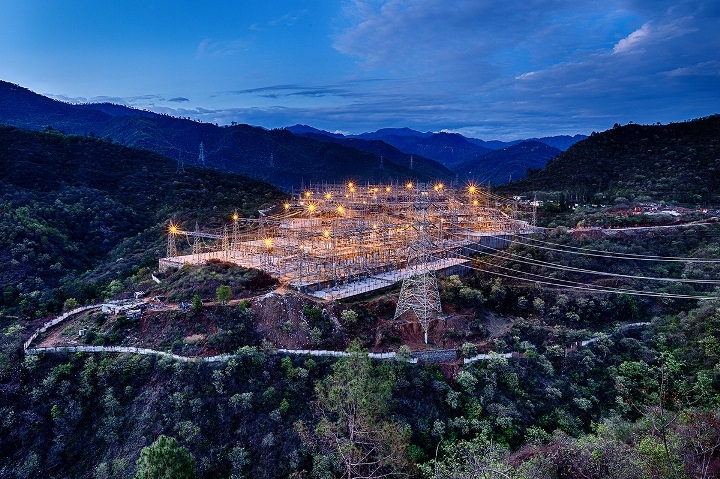 ABB and SNC-Lavalin signed an agreement in December 2017 to form a new company for the engineering, procurement, management, and execution of alternating current (AC) electrical power grid substations. The new company name was Linxon and it commenced operations on September 1, 2018. Linxon is built on 100 years of technology expertise and 60 years of substation and electrification projects experience worldwide.
ABB and SNC-Lavalin signed an agreement in December 2017 to form a new company for the engineering, procurement, management, and execution of alternating current (AC) electrical power grid substations. The new company name was Linxon and it commenced operations on September 1, 2018. Linxon is built on 100 years of technology expertise and 60 years of substation and electrification projects experience worldwide.
As part of the implementation of this agreement, ABB transferred its EPC AC substation business of 170kV & above including turnkey extensions, including operating assets and resources, to Linxon. ABB retained a 49 per cent share, and SNC-Lavalin took the 51 per cent majority share and controlling interest in the company.
I must add here that ABB separated the Power Grids business and formed, on July 1, 2020, a joint venture with Hitachi, which, from October 2021, is named Hitachi Energy. The interest in Linxon is now carried on by Hitachi Energy.
The formation of Linxon represents the first time that an original equipment manufacturer teamed up with an engineering, procurement, management and execution business, creating a unique selling proposition in the market, and adding value for our existing respective customers. The aim of the partnership is to deliver projects on time and to budget utilizing the strength of both companies, thereby realizing a comprehensive offering to the market.
In which countries is Linxon currently active?
Linxon is a global company, operating in five regions: Nordics (Sweden, Finland, Denmark), Central Europe (UK, Ireland, Germany, Switzerland), Asia Pacific (India, Thailand, Nepal, Philippines, Taiwan, Vietnam), Middle East (Saudi Arabia, Bahrain, UAE, Iraq) and North America (US, Canada).
When did Linxon start its operations in India, and what are the business areas that it would be looking at?
Linxon in India was up and running from April 2019, undertaking turnkey electrical alternating current substation projects related to renewable and conventional power generation, power transmission and transportation solutions.
As we can appreciate, the electric substation strongly appears to be Linxon’s forte. Please discuss in brief the criticality of a substation in a power transmission network.
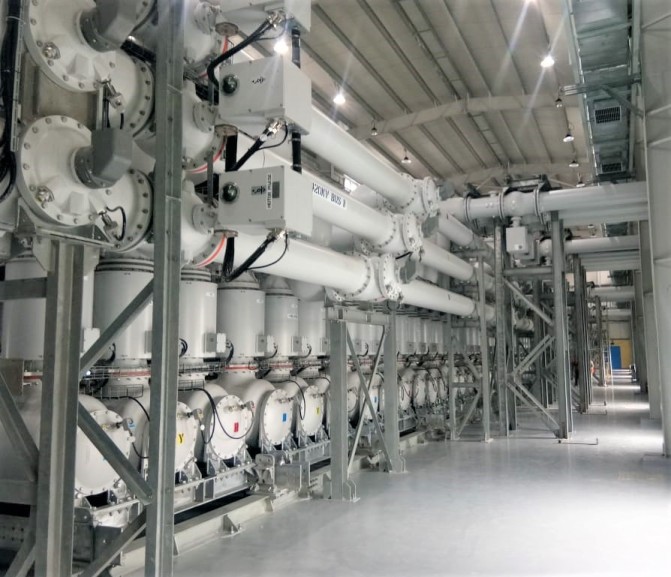 Substations are the critical nodes within the transmission grid, enabling the efficient and reliable transmission and distribution of electricity. Within the substation, switchgear controls and protects the network from power outages and facilitates reliable electricity supply. In other words, substations are a crucial element to connect electricity generation and the consumer, distributing power to people and industry.
Substations are the critical nodes within the transmission grid, enabling the efficient and reliable transmission and distribution of electricity. Within the substation, switchgear controls and protects the network from power outages and facilitates reliable electricity supply. In other words, substations are a crucial element to connect electricity generation and the consumer, distributing power to people and industry.
As we say, Linxon helps cities grow, industries expand, and communities thrive by building a crucial part of the power transmission grid.
Can we presume that Linxon always sources key equipment for its projects from its parent Hitachi Energy?
Hitachi Energy is the supplier of choice for Linxon, and their portfolio represents an industry leading technological knowledge. With Hitachi Energy being a joint owner of Linxon, we enjoy preferred access to Hitachi’s products and technology. But in certain cases, other suppliers may be considered, depending on the client’s scope.
Tell us about Linxon’s current projects under execution, in India and Asia-Pacific region.
The following projects are currently under execution:
- Power supply package for Monorail Pink & Yellow lines Project in Bangkok, Thailand
- Engineering, supply, erection, testing and commissioning of 3rd Rail Metro system for RVNL Kolkata Metro
- Engineering, supply, erection, testing and commissioning of 3rd Rail Metro system for Kochi Metro
- Engineering, supply, erection, testing and commissioning of 33kV distribution, 750V DC third rail traction electrification including traction substations, auxiliary substations, and SCADA system for Reach-05 & Reach-06 of Phase-II of Bangalore Metro Phase II
- A new 400kV AIS substation package for solar power plant to ACME Cleantech Solutions
- 220/132kV GIS order from West Bengal State Electricity Transmission Company Ltd (WBSETCL)
- Substation extension of 400/220kV Kunta/Kolar/Hiriyur/Kochi/Tuticorin substation for PGCIL
- Substation for extension of 765/400/220kV Bhadla-II pooling station for PGCIL
- 400kV substation project for NTPC Solar CPSU-I & II from Tata Power
(See table ahead for Linxon India’s projects completed in 2021)
Just a small digression: what is the current progress on Linxon’s proposed floating substation technology.
Linxon and its parent company Hitachi Energy is progressing the joint development, designing equipment for the floating substation platform, combined with the proven know-how and vast domain expertise developed in complex technical solutions such as AC offshore wind projects by Linxon and we can also leverage the expertise of Atkins (a subsidiary of SNC-Lavalin) in naval design and floating platforms.
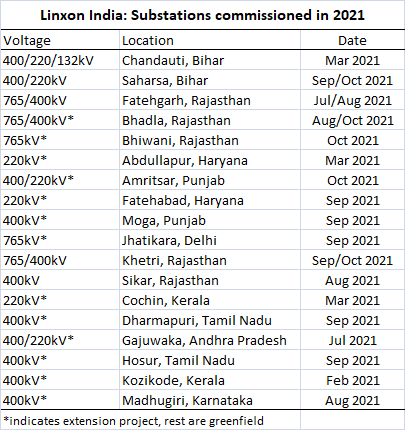
We are most certain that floating substations will enable the next phase of the booming offshore wind power industry, which is particularly interesting in Europe. Achieving an efficient and reliable floating substation is key to decarbonizing the electricity grid by unlocking large offshore wind generation potential.
Linxon India has also entered metro rail electrification with the Bangalore-Phase II order. What is the current status of this order?
The contract agreement was signed in March 2021. This order was signed in midst of the extremely serious second Covid wave which witnessed lockdown across the country, with Bangalore being seriously impacted as well. Despite the Covid restrictions, the project is moving well and almost all major equipment engineering is completed; station layouts, third rail layouts and other system engineering are in progress.
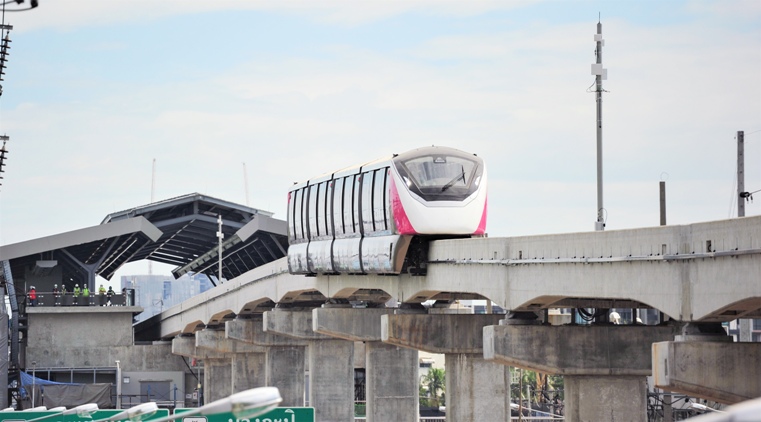
The outdoor and indoor warehouse measuring around 6000 sqm is ready and site activities will be commencing by end of February 2022. In brief, the project is progressing well and well in line with BMRCL schedule.
Apart from constraints caused by the COVID-19 pandemic, what are your main execution challenges in India for power transmission projects?
Work during monsoon period is challenging, especially when it comes to steering heavy equipment to its foundation. Besides we sometimes encounter challenges arising from soil conditions, tight timeframe and availability of competent manpower.
Given that India has outline massive investment in the power transmission infrastructure space, especially renewable energy evacuation, how do you see business opportunities in India?
The power sector is one of the most diversified sectors in the world. Sources of power generation range from conventional sources such as coal, lignite, natural gas, oil, hydro and nuclear power to viable non-conventional sources such as wind, solar, and agricultural and domestic waste.
The Government of India has allocated Rs.111 lakh crore ($1.4 trillion) under the National Infrastructure Pipeline for the period FY19 to FY25. The energy sector is likely to account for 24 per cent capital expenditure over this period. This shows that we have a potential pipeline available to handle our conventional business of executing substations in near future. New metro rail (subway) systems are under construction and bringing vast changes. We are also tracking offshore wind projects in Taiwan, Japan and other South East Asian countries.
In the years to come, do you foresee India making a significant contribution to Linxon’s global business?
After signing the Paris agreement six years back, India has given a massive thrust to green power and has set up a target of addition of renewable energy of 500 GW by 2030. Also, the renewable target of 175 GW by 2022 now stands revised to 227 GW. As per the Central Electricity Authority (CEA) estimates, by 2029-30 the share of renewable energy generation would increase from 18 per cent to 44 per cent.
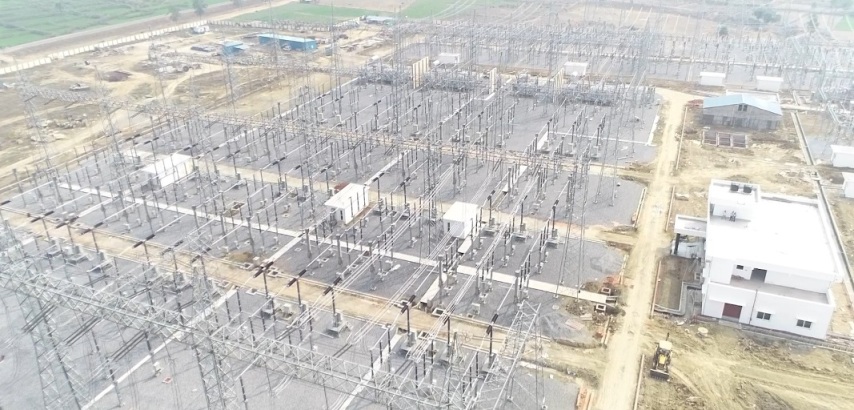 To assist this renewables growth and to enable the supply of electricity from power surplus regions to power deficit regions in the country, the Government of India approved ISTS power transmission projects worth $2.1 billion in December 2021. These projects would cater to the evacuation network for about 20 GW of renewable power in Rajasthan, Gujarat, Madhya Pradesh and J&K. Linxon is already executing projects in Rajasthan and considers itself in an advantageous situation while grabbing the market share in forthcoming 20 GW transmission system. We are also eyeing a significant share in upcoming metro projects in India.
To assist this renewables growth and to enable the supply of electricity from power surplus regions to power deficit regions in the country, the Government of India approved ISTS power transmission projects worth $2.1 billion in December 2021. These projects would cater to the evacuation network for about 20 GW of renewable power in Rajasthan, Gujarat, Madhya Pradesh and J&K. Linxon is already executing projects in Rajasthan and considers itself in an advantageous situation while grabbing the market share in forthcoming 20 GW transmission system. We are also eyeing a significant share in upcoming metro projects in India.
We are catering to engineering of Linxon projects from our Chennai as well as Slovakia office with very high productivity. Our experienced teams are working closely with all stakeholders across globe to ensure smooth execution of the projects.
Note: All industrial photographs seen in this interview show projects by Linxon India.


